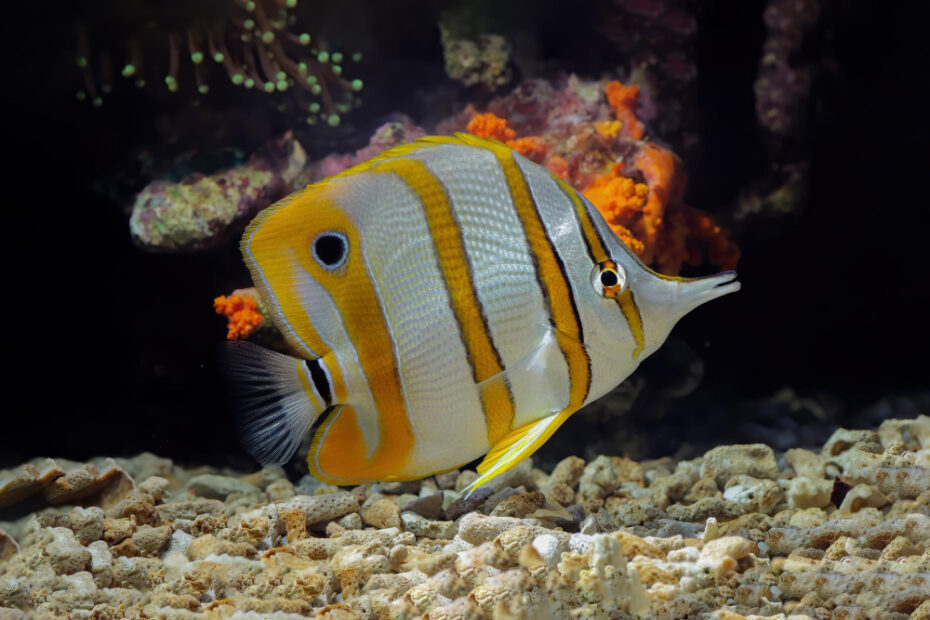The Copperband Butterflyfish, scientifically known as Chelmon rostratus, is a striking marine fish that’s admired for its elegant appearance and unique mouth structure. While captivating, they can be somewhat challenging to care for in a home aquarium, particularly when it comes to their dietary needs.
Appearance: The Copperband Butterflyfish features vertical yellow-orange and white bands across its body, and its snout is long and pointed. It also has a false eyespot near the tail, which is believed to deter predators by confusing them about which end of the fish is the head.
Habitat: In the wild, this fish is found throughout the Indo-Pacific region, from the Great Barrier Reef in Australia to Southeast Asia and up towards Japan.
Aquarium Care:
- Tank Size: A minimum tank size of 75 gallons (285 liters) is recommended, as they appreciate ample space to roam and forage.
- Diet: One of the primary challenges with the Copperband Butterflyfish is its diet. In the wild, they feed on a variety of invertebrates, including coral polyps, small crustaceans, and notably, Aiptasia (a type of nuisance anemone in aquariums). In captivity, they can be finicky eaters. A varied diet that includes meaty foods like mysis shrimp, brine shrimp, and clam meat is important. Some aquarists have success training them to eat prepared foods like pellets, but this can take time and patience.
- Tank Mates: They are generally peaceful and can be kept with a range of reef-compatible species. However, they may eat ornamental shrimp or small feather duster worms. Additionally, they may not fare well with aggressive tank mates or others that might outcompete them for food.
- Environment: While they can be kept in a reef environment, there’s a risk they may nip at some soft and stony corals. They do best in tanks with plenty of live rock that offers foraging opportunities and hiding spots.
- Water Parameters: Maintain typical marine parameters – salinity close to natural seawater, temperatures around 76-80°F (24-27°C), and pH around 8.1-8.4.
- Health: Like many marine fish, they can be susceptible to common diseases like marine ich. A proper quarantine process for any new additions and maintaining good water quality can help in prevention.
Conclusion: The Copperband Butterflyfish is a beautiful addition to a marine aquarium but does come with specific care requirements. It’s crucial for potential keepers to be prepared to meet their dietary needs and provide a stable environment. Proper research and dedication to their care can make keeping a Copperband Butterflyfish a rewarding experience.

